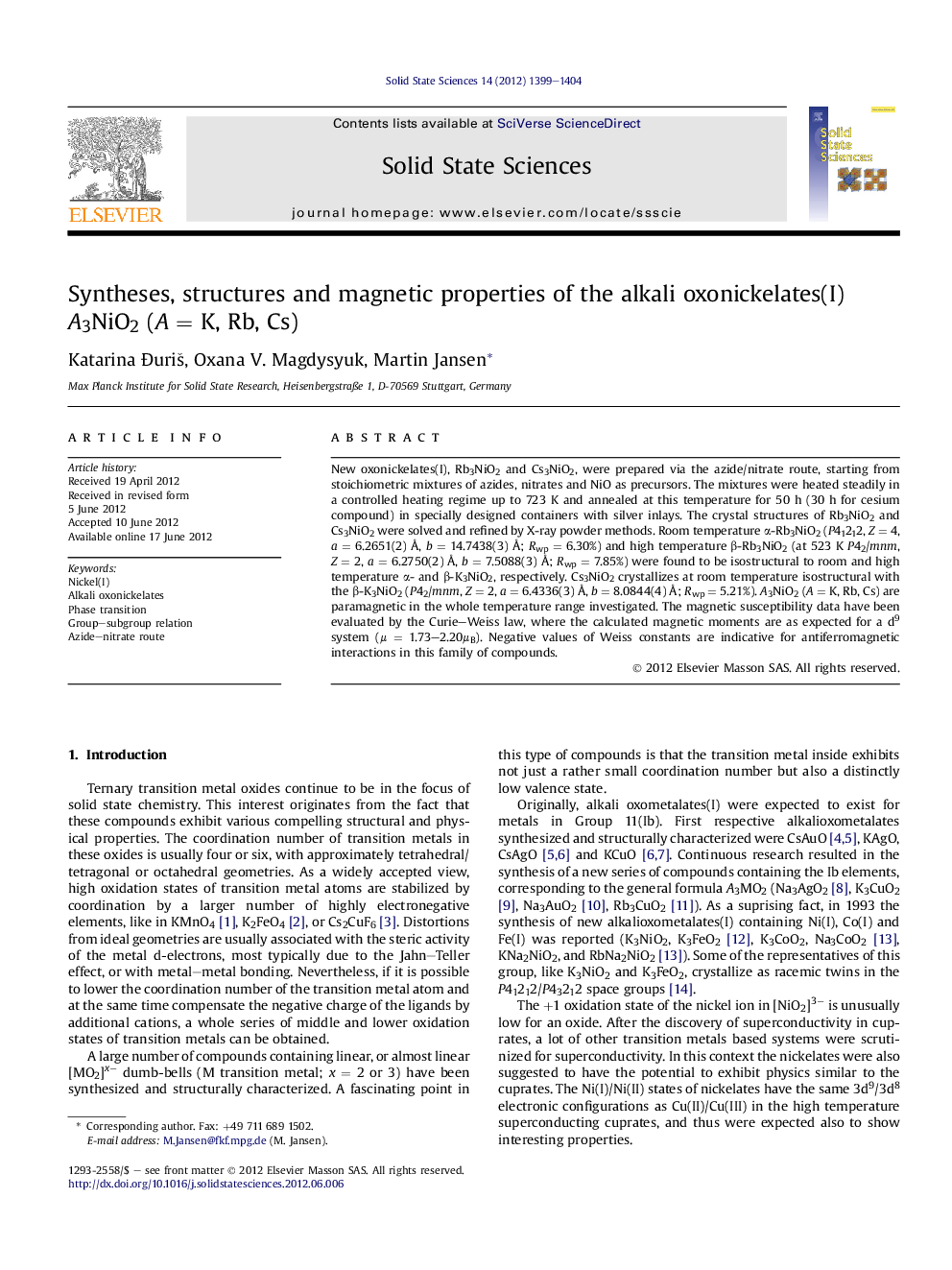| Article ID | Journal | Published Year | Pages | File Type |
|---|---|---|---|---|
| 1505040 | Solid State Sciences | 2012 | 6 Pages |
New oxonickelates(I), Rb3NiO2 and Cs3NiO2, were prepared via the azide/nitrate route, starting from stoichiometric mixtures of azides, nitrates and NiO as precursors. The mixtures were heated steadily in a controlled heating regime up to 723 K and annealed at this temperature for 50 h (30 h for cesium compound) in specially designed containers with silver inlays. The crystal structures of Rb3NiO2 and Cs3NiO2 were solved and refined by X-ray powder methods. Room temperature α-Rb3NiO2 (P41212, Z = 4, a = 6.2651(2) Å, b = 14.7438(3) Å; Rwp = 6.30%) and high temperature β-Rb3NiO2 (at 523 K P42/mnm, Z = 2, a = 6.2750(2) Å, b = 7.5088(3) Å; Rwp = 7.85%) were found to be isostructural to room and high temperature α- and β-K3NiO2, respectively. Cs3NiO2 crystallizes at room temperature isostructural with the β-K3NiO2 (P42/mnm, Z = 2, a = 6.4336(3) Å, b = 8.0844(4) Å; Rwp = 5.21%). A3NiO2 (A = K, Rb, Cs) are paramagnetic in the whole temperature range investigated. The magnetic susceptibility data have been evaluated by the Curie–Weiss law, where the calculated magnetic moments are as expected for a d9 system (μ = 1.73–2.20μB). Negative values of Weiss constants are indicative for antiferromagnetic interactions in this family of compounds.
Graphical abstractFigure optionsDownload full-size imageDownload as PowerPoint slideHighlights► Synthesis of new A3NiO2 (A = Rb, Cs) compounds. ► Magnetic susceptibility behavior is given for the first type for A3NiO2 (A = K, Rb, Cs) analogues. ► Phase transition for Rb3NiO2 is explained by group–subgroup relations.
